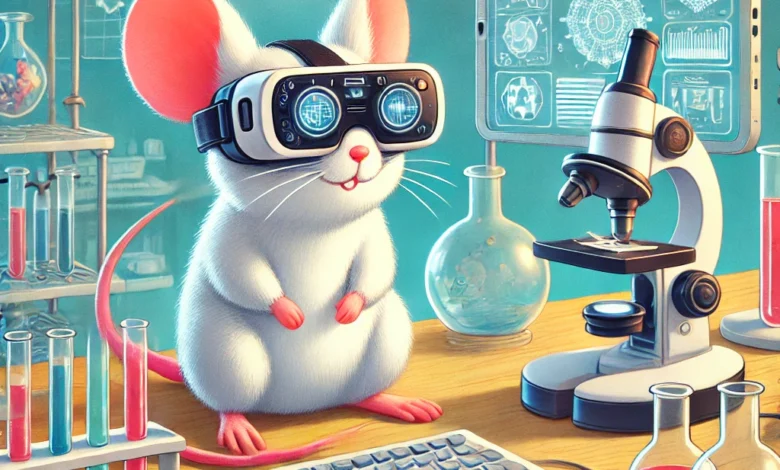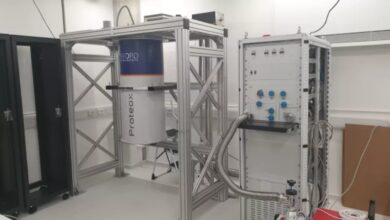Tiny Virtual Reality Glasses for Mice: A Leap Forward in Neuroscience

Groundbreaking move for neuroscience research, scientists have developed miniature virtual reality (VR) glasses specifically designed for mice, allowing researchers to observe and study brain activity in highly controlled, yet immersive environments. This innovation, known as MouseGoggles, is set to revolutionize how scientists explore the complexities of the mammalian brain.
The development, led by researchers at Northwestern University, introduces a new era of VR technology that can simulate naturalistic scenarios for mice, from navigating mazes to encountering simulated predators. Unlike previous setups that used large screens or projectors, these tiny VR goggles provide a full field-of-view experience, ensuring that mice are fully immersed in the virtual world without external visual cues from the laboratory environment disrupting the study.
How It Works:
MouseGoggles work by fitting snugly over the eyes of the mouse, delivering independent, binocular visual stimulation across a wide field of view. This setup not only creates a convincing depth perception but also allows for the simulation of overhead threats, something that was previously challenging with traditional VR systems for rodents. The mice, placed on a small treadmill, can move through these virtual landscapes, with their brain activity being monitored in real-time.
Applications and Implications
The implications of this technology are vast. By providing a more naturalistic setting for experiments, scientists can delve deeper into how neural circuits encode information, how memory forms, and how animals respond to threats in their environment. The ability to simulate experiences like a bird of prey diving down from above has already shown immediate reactions in mice, such as freezing or speeding up, responses that mimic those observed in nature.
This technology not only promises to enhance our understanding of the mouse brain but also has potential applications in human neuroscience. By studying how mice navigate virtual spaces or respond to stimuli, researchers hope to gain insights into conditions like Alzheimer’s, where spatial navigation and memory are affected.
The Future of VR in Animal Research
The introduction of MouseGoggles is part of a broader trend where VR is increasingly being utilized in animal research to study behavior and brain function in controlled settings. These advancements have been celebrated by the scientific community for their potential to make complex experiments more accessible and to provide clearer, more precise data. Additionally, the relatively low cost and user-friendly nature of the goggles could encourage wider adoption in labs around the world.
While the technology is still in its early stages, the enthusiasm from the scientific community is palpable. Posts on X have highlighted the innovative nature of MouseGoggles, with many in the neuroscience and tech innovation circles praising the precision and real-time capabilities these devices offer for brain research.
As research continues, the scientific community looks forward to further refinements and possibly extending this technology to other small animals, potentially opening new avenues in understanding animal cognition and behavior in a controlled, yet natural-feeling environment.
This pioneering work in VR for mice not only showcases the creativity of modern science but also underscores the commitment to advancing our understanding of the brain in ways that were previously unimaginable.




